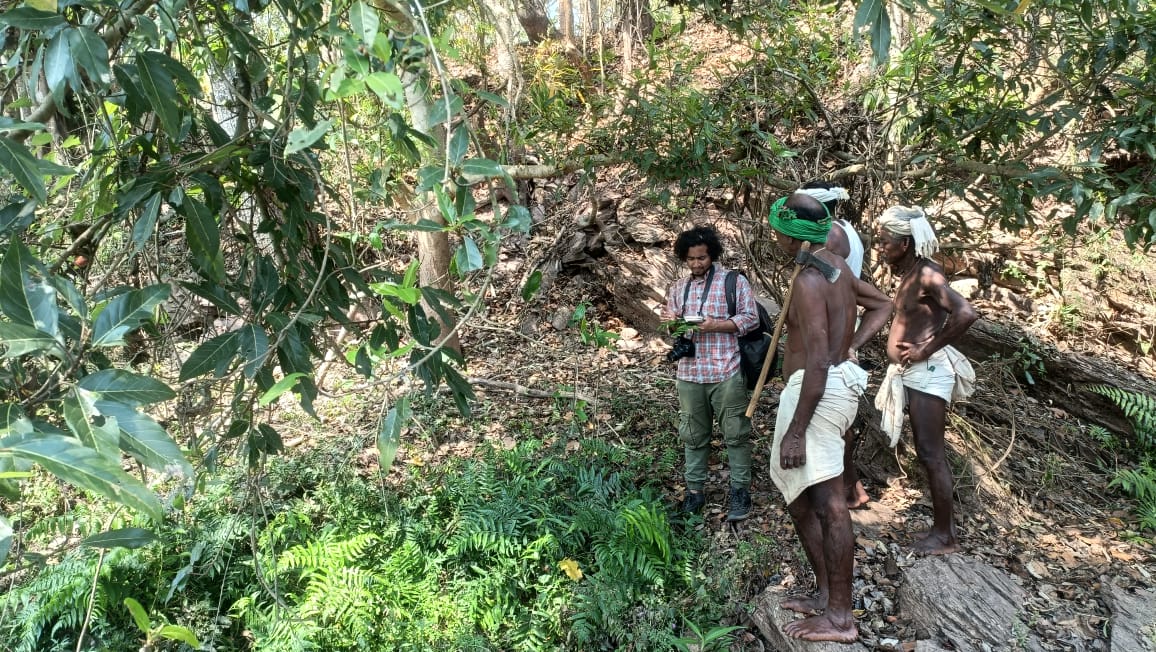The tribal communities in the Bastar region have been depending on the wild plant resources since time immemorial and therefore have extensive knowledge of identification, management, and use of wild edible plants. However, the ethnobotanical research on indigenous plant knowledge in Central India has been so far focused on medicinal plants, while the traditional ecological knowledge in the context of wild edible plants and community biodiversity management remains neglected.
In the frame of his dissertation entitled ‘Ethnobotany of Gond and Baiga Communities in the Vicinity of selected sacred groves in Chhattisgarh, India’, a member of our team Nishanth Gurav is realizing the first data collection field expedition to the Bastar region in central India with the aim to investigate edible wild plants and specific management practices from the ethnobotanical perspective.
Fifty sacred groves sites across the study area of 2 districts were identified using transect walks. The sacred groves are forest patches in community villages and their surroundings, intentionally conserved in the name of their local deities. Strict rules are associated with biodiversity use within the sacred groves as they are believed to be the local deities' homes.
In the first phase of the ethnobotanical inventory, conducted during the course of 3 months of fieldwork, the methods of free listing, focus group discussions, and household interviews were applied. Community biodiversity management practices in the context of wild edible plant species were also documented using participatory mapping, observation, and walks in the woods methods.
The preliminary results show that the indigenous people use 100 wild edible plants, apply species-specific sustainable harvesting practices, various methods of preparation of tuberous plants (17 species), and that the medicinal-food relation in plant use is a common aspect.
The documented species will be further investigated through folk taxonomy, population ecology, and conservation studies.


